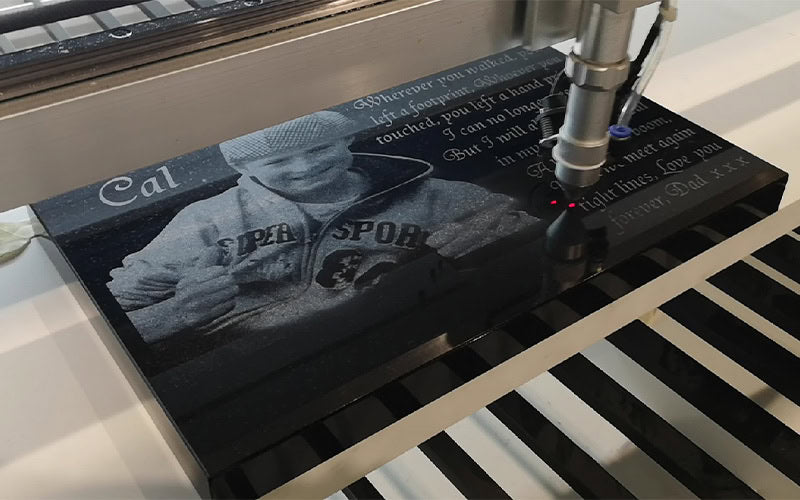
Sandblasting VS Laser Etching
Share
Sandblasting and laser etching are two common methods used to personalize granite monuments, each with distinct advantages and limitations.
Sandblasting is a traditional technique that involves masking the granite surface and blasting it with high-pressure abrasive material to carve designs, lettering, and images into the stone. It is ideal for deep, bold inscriptions and high-contrast imagery. Sandblasted designs are physically etched into the granite, making them durable and highly visible even from a distance. This method works well with both polished and unpolished granite surfaces and is particularly effective for lettering and basic artwork.


Laser etching, on the other hand, uses a focused laser beam to heat and fracture the surface of polished granite, creating detailed, high-resolution images. This technique excels in reproducing portraits, fine art, and intricate scenes with photographic quality. However, laser etching is typically shallower and relies on the contrast between the polished surface and the etched area, making it best suited for dark-colored granite.


